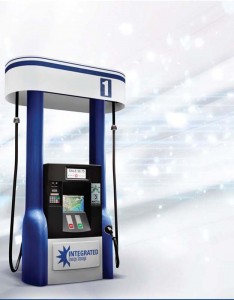
Rapid charging, using Level III chargers like this one, won't seriously degrade electric vehicle batteries, says MIT.
They may be clean and green, but for most American motorists, operating a battery-electric vehicle can be seen as quite a pain. Most models, such as the 2011 Nissan Leaf, are expected to get no more than about 100 miles per charge, and recharging their lithium-ion batteries can take as much as 12 hours or more.
Factor in the cost penalty of a battery vehicle and most experts predict the technology will, at best account for less than 10% of the U.S. market by 2020. But what if those range, price and charging challenges are overcome?
The cost of lithium technology is expected to plunge as sales volumes rise and competition expands. As with other batteries, meanwhile, power density – read range – is also expected to increase. And proponents believe they can also make charging less of a hassle using high-voltage quick chargers that can top off a drained battery in as little as 15 to 30 minutes.
 There has been widespread concern that these so-called Level III chargers could take a toll, significantly reducing battery life, but a new study by Electric Vehicle Team at MIT says such problems have been significantly overstated.
There has been widespread concern that these so-called Level III chargers could take a toll, significantly reducing battery life, but a new study by Electric Vehicle Team at MIT says such problems have been significantly overstated.
Using lithium batteries from supplier A123 – which will provide the power for the upcoming Fisker Karma plug-in hybrid – the MIT team found that even after 1,500 discharge and rapid recharge cycles the batteries lost barely 10% of their initial capacity.
The researchers did use a fan to try to hold down the heat created by recharging. Lithium-ion batteries are like humans when it comes to the temperatures they work best at. High heat can degrade the batteries, so some experts believe that it will require thermal management systems – onboard cooling – to minimize the potential damage from rapid rechargers.
By running 1,500 cycles, the MIT team reproduced the sort of use that even the most demanding driver might put a battery car through over a period of as much as five years or more. Even without rapid recharging automakers expect some battery degradation, though the industry is generally shooting for a functional lifespan of 10 years or more for advanced automotive batteries.
Right now, according to researchers, there is only one 440-volt Level III charging facility in the U.S. that meets proposed standards, in Portland, Oregon. But many makers, notably including Nissan, are cautiously betting on the next-generation technology to help enhance the appeal of battery-electric vehicles.
For a vehicle like Leaf, using a household 110-volt outlet is a fallback that only works for those who use their vehicles for commuting and seldom drain the battery “dry.” Various makers are trying to enhance their 220-volt Level II systems and are getting to the point where full recharging of a 24 kilowatt-hour battery can be accomplished in as little as 3 to 4 hours.
But that’s still nowhere near the equivalent of topping off a near-empty gas tank. Hooking up to a charger at a mall during a lunch-time shopping spree would get perhaps 20 or 30 more miles range, notes Sherif Marakby, head of Ford’s electrification program.
On the other hand, says Tom Lane, Nissan’s global planning chief, being able to get an 80% top-off in anywhere from 15 to 30 minutes makes an electric vehicle “much more competitive” with a conventional gasoline-powered automobile.
If and how soon Level III chargers start popping up around the country remains to be seen. Right now, there are just 1,200 of the more conventional 220-volt Level II chargers available for the public in the entire country, according to Ford data, though Marakby says that will jump to 18,000 over the next couple years.
But the cost and complexity of a 440-volt system means that without a clear business case the widespread expansion Level III charging network could be years away.
